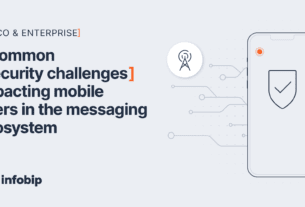The COVID-19 pandemic brought about unprecedented changes to the way we work. As organizations worldwide adapted to the challenges posed by the global health crisis, hybrid working emerged as the new norm. This article explores the concept of Sensory Intelligence® and its relevance in the context of hybrid working. Business leaders play a vital role in understanding and leveraging Sensory Intelligence® to create productive and inclusive work environments that cater to the diverse needs of their employees.
Understanding Sensory Intelligence®
Sensory Intelligence® refers to an individual’s awareness of their work environment, including the stimuli present and how their brain responds to these stimuli. Each person has a unique genetic code and sensory wiring, which influences their sensitivity to environmental factors. These daily sensory processing patterns affect attention, emotion, and behaviour, all of which contribute to workplace productivity and efficiency.
The Impact of COVID-19 on Sensory Intelligence®
The COVID-19 pandemic provided an opportunity to observe the impact of Sensory Intelligence® on remote work. Research conducted during the pandemic revealed that approximately 30% of individuals are more sensitive to environmental stimuli, while another 30% are relatively oblivious to such stimuli. The former group experienced increased productivity, comfort, and happiness while working from home, as they could control their environment and eliminate distractions. On the other hand, the latter group struggled with isolation, feeling lonely and deprived of social interaction. Their ideal work environment is one filled with activity, variety, and collaboration, such as a bustling office space.
The Need for Hybrid Working
The pandemic highlighted that what works for one individual may not be suitable for another. While remote work proved effective for some, others found it challenging. The solution lies in adopting a hybrid approach that combines the best aspects of traditional office-based work with the flexibility of remote work. For the 40% of individuals who can adapt to various work environments, accommodating their preferences for optimal productivity is relatively straightforward.
The Benefits of Hybrid Working
Hybrid working offers several advantages. First, it acknowledges that humans have different needs and preferences, enabling organisations to create tailored work environments that enhance productivity and employee satisfaction. By implementing a hybrid model, organizations can become employers of choice, attracting and retaining top talent. Additionally, the adoption of hybrid working can lead to cost savings through reduced office space requirements.
Guidelines for Successful Hybrid Working
To make hybrid working successful, business leaders and managers should consider the following guidelines:
- Embrace Individual Differences: Assess employees to determine their best-fit work environment, whether it be remote, in-office, or a combination. Accommodating individual preferences not only boosts productivity but also promotes employee happiness and retention.
- Implement a Scheduling System: Establish a scheduling system that ensures fair access to office space while maximizing efficiency. This may involve additional administrative efforts but can result in cost savings through rental office space.
- Foster Face-to-Face Engagement: Face-to-face engagement is essential for boosting morale, ensuring healthy communication and promoting teamwork. Those in leadership positions should recognize that sensory avoiders may require less contact, while sensory seekers may benefit from more interaction.
- Support Remote Workers: While remote work is encouraged, leaders must acknowledge that not everyone has an ideal home working space. Provide guidance and support for employees in setting up effective home workspaces. If necessary, consider flexible working options and create focused and quiet spaces within shared office workspaces.
- Focus on Output, Not Hours: Shift the focus from monitoring hours worked to measuring output and productivity. Implement systems that track and document the results employees produce, regardless of where or when they work.
Key Takeaways
The era of hybrid working requires managers to understand and leverage Sensory Intelligence® to create productive and inclusive work environments. By embracing individual differences, implementing effective scheduling systems, fostering face-to-face engagement, supporting remote workers, and focusing on output rather than hours worked, leaders and managers can navigate the challenges of hybrid working successfully. Organizations that embrace a flexible hybrid culture, acknowledge individuality, and lead accordingly will be the success stories of the future.
The power of Sensory Intelligence® lies in its ability to recognize and cater to the diverse needs of employees. By understanding how individuals respond to their work environment, leaders can create an environment that maximizes employee productivity and promotes employee well-being. Hybrid working offers the flexibility to accommodate different sensory styles, allowing employees to thrive in their preferred work settings. It is crucial to champion the benefits of hybrid working and advocate for its adoption within organizations. By harnessing the power of Sensory Intelligence®, organizations can retain top talent, boost productivity, and create a positive work culture.
By embracing the concept of Sensory Intelligence® and implementing the guidelines outlined in this article, organisations can begin to navigate the complexities of hybrid working and create a productive and inclusive work environment. The future belongs to organisations that prioritize individuality, leverage Sensory Intelligence®, and embrace the benefits of hybrid working. To discover how Sensory Intelligence® can transform your hybrid working strategy so that your employees are set up to succeed contact us. Watch this to learn more about how Sensory Intelligence® tackles the idea of hybrid working





